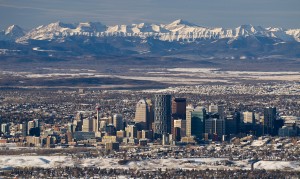 Calgary Population
Calgary Population
The current population of the city of Calgary is estimated to be approximately 1,149,552, which is an increase of about 2.6% from the last record of the population. Calgary is the largest city in Alberta, the third-largest municipality and the fifth-largest metropolitan area in all of the country. Based on the total land area and the total population of the city, the population density of Calgary is estimated to be about 3,608 people per square mile.
Demographics of Calgary
About 24% of the population of Calgary is immigrants and about 92% of the population is actually a Canadian citizen. About 90% of the population solely speaks English and only 0.06% of the population speaks only French. However, 8% of the population speaks both English and French.
About 28% of the population is considered to be a visible minority. The largest of these minority groups is South Asian, making up about 7% of the population. The next largest minority group is Chinese, which makes up about 6% of the population. The largest ethnic ancestral group is those who identify as English, which makes up about 24% of the population. The next largest group is those that identify as ethnically Canadian, which makes up about 20% of the population.
Geography of Calgary
Calgary is located at the transition zone between the Canadian Rockies foothills and the Canadian Prairies. The city lies within the foothills parkland natural subregion of the parkland natural region and the foothills fescue subregion of the grasslands natural region. Calgary’s elevation is approximately 1,048 m (3,438 ft) above sea level downtown, and 1,084 m (3,557 ft) at the airport. The city proper covers a land area of 726.5 km2 (280.5 sq mi) (as of 2006) and as such exceeds the land area of the City of Toronto.
There are two major rivers that run through the city. The Bow River is the largest and flows from the west to the south. The Elbow River flows northwards from the south until it converges with the Bow River near downtown. Since the climate of the region is generally dry, dense vegetation occurs naturally only in the river valleys, on some north-facing slopes, and within Fish Creek Provincial Park.
 Sports in Calgary
Sports in Calgary
The city of Calgary has four professional sports teams: the Calgary Stampeders, The Calgary Flames, the Calgary Hitmen, and the Calgary Roughnecks. The Calgary Stampeders play in the Canadian Football League and they play in McMahon Stadium. The Calgary Flames play in the National Hockey League and play in the Scotiabank Saddledome. The Calgary Hitmen play in the Western Hockey League and also play at the Scotiabank Saddledome. Lastly, the Roughnecks play in the National Lacrosse League and they too play in the Scotiabank Saddledome.
Visit Calgary
Historical Population of Calgary
The population of the city of Calgary has historically always increased since the founding of the city, except for a short time in the 1930s. The first record of population of the city was in 1884 and was 506 people. Since then, the population has increased to almost 1.15 million people. The growth has gone through various periods of different growth rates, but the majority of the time, the growth has been quite high.
| Year | Population |
| 1921 | 62,305 |
| 1931 | 83,761 |
| 1941 | 88,904 |
| 1946 | 100,044 |
| 1951 | 129,060 |
| 1956 | 181,780 |
| 1961 | 249,641 |
| 1966 | 330,575 |
| 1971 | 403,319 |
| 1976 | 469,917 |
| 1981 | 592,743 |
| 1986 | 636,107 |
| 1991 | 710,795 |
| 1996 | 768,082 |
| 2001 | 878,866 |
| 2006 | 988,193 |
| 2011 | 1,096,833 |
Projected Population of Calgary
The population of Calgary is projected to continue its high population growth over the next few years.
| Year | Population |
| 2014 | 1,419,800 |
| 2015 | 1,435,600 |
| 2016 | 1,451,500 |
| 2017 | 1,468,500 |
| 2018 | 1,485,000 |
| 2019 | 1,502,200 |
| 2020 | 1,519,400 |
| 2021 | 1,536,500 |


